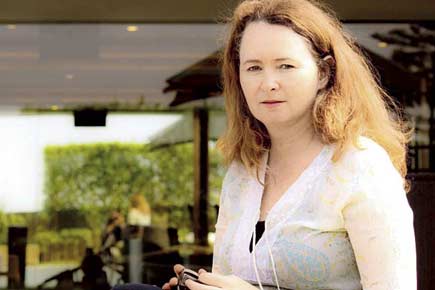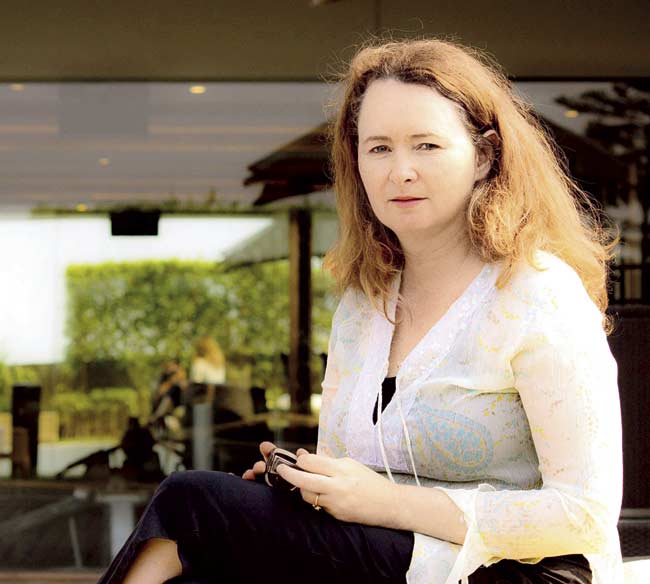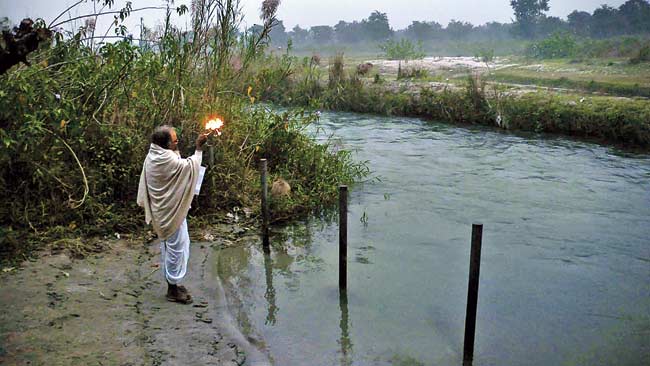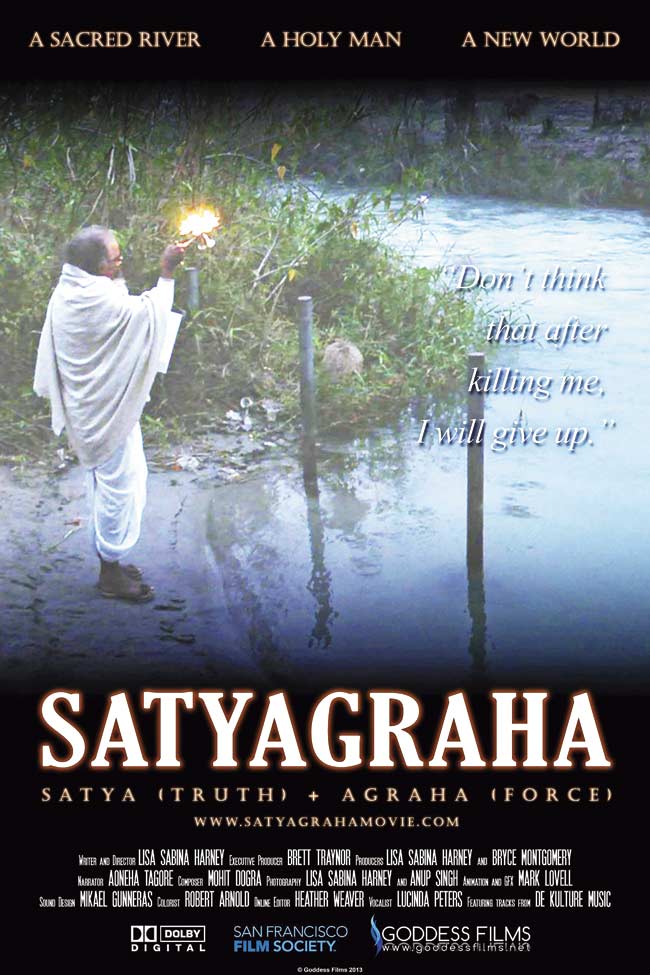Filmmaker Lisa Sabina Harney says her documentary, Satyagraha, raises the right questions about the wrongs. The movie will be screened in Mumbai next month

Filmmaker, Lisa Sabina Harney, documentary, Satyagraha, Mumbai, river Ganga, Swami Nigamananda
In mid-2011 before his death, Swami Nigamananda fasted for 68 long days to take a stand against the sand mining mafia who had little regard for Ganga. The mining causes erosion, and even disturbs the underwater sand.

Australian-born and San Francisco-based filmmaker Lisa Sabina Harney
ADVERTISEMENT
Australian-born and San Francisco-based filmmaker Lisa Sabina Harney wanted to know what lies the below the surface. The curiosity to know whether the crusader indeed perished due to starvation or there was foul play, led to her feature documentary, Satyagraha — Truth Force. She talks about the film which took two years to film:
What drove you to make this documentary?
I met Swami Nigmananda in 2010 by coincidence. I was in India on vacation in Badrinath after completing a documentary on Pasig River in Philippines. He told me all about their struggles to protect the Ganga. I was absolutely fascinated and we talked rivers non-stop after that. When he died the year after, I thought there was nothing greater than what he gave up for the river. It deserves a great deal of respect and so, when his guru Shivanand told me he believed he may have been poisoned. I considered it my personal duty to find out more. The film came about organically — it was never intended — but the events were so bizarre that I felt it had the potential to become a documentary.
You must have faced several challenges being a foreigner in the country.
As we filmed in Nigmananda’s ashram, I don’t think we faced challenges that other foreigners might face. It was clear that his satyagraha greatly concerned the government and some others who, I guess, were still stinging over the criticism they received over how they had handled Nigmananda and his untimely death. They tried to stop the filming in a number of different ways. I believe they were concerned that if Shivanand died too — and it’s on record through the lens of my camera — then the buck would stop with them. Rightly so. Ganga is treated horribly.

A still from the film, which is inspired by Swami Nigamananda, who fasted for 68 days mid-2011 before succumbing to starvation. He was taking a stand against the mining mafia who had little regard for the River Ganga
Did you manage to get the mining mafia’s side of the story?
The mining mafia’s side of the story was published every day in local newspapers and politicians spoke about it on television. What people didn’t know is the environmental side and the perspective of the sadhus who nourish the river in terms of prayers and live beside it. We also took the perspective of local farmers who need the river to irrigate their crops. None of this information has found its way into the public arena with the exception of a few environmental news agencies and investigative agencies such as Tehelka. Most people look at mining as something that improves the economy but it is extremely short-sighted when you are taking it from the bed of a river that supplies the water for almost half of India’s entire population.
As a filmmaker, where do you place Swami Nigamananda in terms of legacy?
How does one judge a sadhu who gave up his life for something he considered sacred? Symbolically, Nigamananda will become very important over time not only as a Ganga crusader but as someone with the strength of purpose to give up everything for his principles. He didn’t have to fast. But then how can a holy man idly watch while something sacred is being defaced and do nothing about it?
What do you find more interesting — directing a movie or making a documentary?
Documentaries are the real deal, real life playing out in front of a lens. Movies are a ton of fun and I love working with actors. I can’t say that one is more interesting than the other but I can say that documentaries are usually a bit easier to film because you don’t have 50 people tagging along with you, helping you make it as when you make dramatic films. In documentary filming, it’s me and two others and you can move fast in those circumstances and then there is a long edit period because it’s not scripted.
Why do you think documentary as a genre is still lagging behind as far as theatrical releases are concerned?
I think India may be ready to embrace documentary as a cinematic experience. There are so many great Indian filmmakers, especially documentary makers whose works people go out of their way to see internationally. It just needs to be valued more. I think that can happen, it happened in the West in the same way. Now, people happily go to the cinema to see a documentary and often have a more intense experience than a dramatic film because the realness of the story touches them more deeply. You just need to tell a good story, be it drama or documentary, people will always engage
with that.

Satyagraha will be screened at the upcoming Mumbai International Film Festival in February
 Subscribe today by clicking the link and stay updated with the latest news!" Click here!
Subscribe today by clicking the link and stay updated with the latest news!" Click here!







